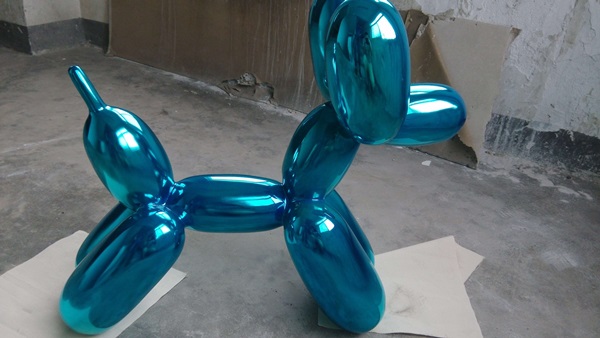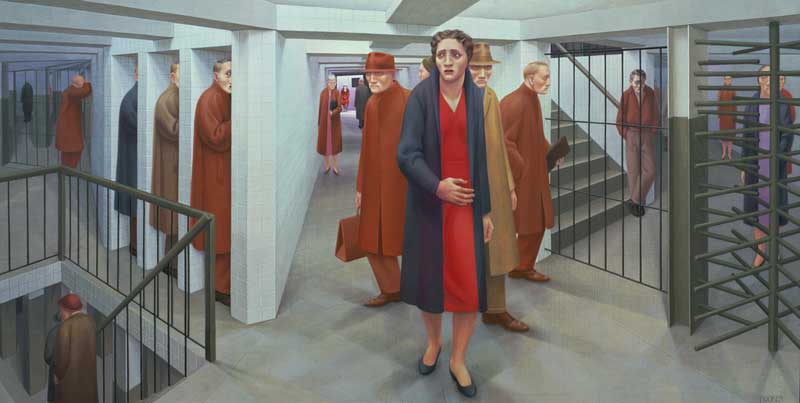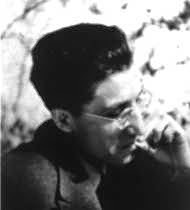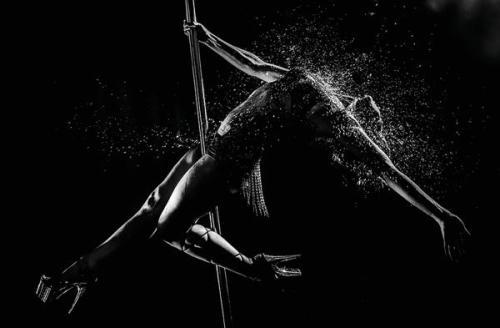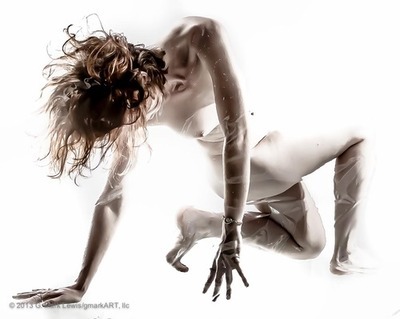Since July 2013, Daily Serving’s #Hashtags column has been written by Anuradha Vikram, Director of the Residency Programs at the 18th Street Arts Center in Los Angeles. For the past year, Vikram has eloquently and intelligently voiced arguments about—among other topics—institutionalized racism, representations of marginalized identities, and economic inequality, all the while offering nuanced critiques of the artworks that take up these subjects. (For example, see her incisive review of LaToya Ruby Frazier’s photographs at the Brooklyn Museum, in which Vikram underscores the artist’s capacity to meld “oppression and self-investigation.”)
In September, we’ll introduce new #Hashtags contributors who will bring their priorities and perspectives to the column. But this week, we’d like to highlight Vikram’s tenure by republishing one of her many standout entries. In the article below, she astutely pairs reflections on Sturtevant’s practice of appropriation with the highly contested inclusion of Joe Scalan’s “Donelle Woolford” project in the 2014 Whitney Biennial. As she does so often, Vikram goes to the heart of the matter by observing that the work’s potential to critique “the interchangeability of minority faces in an exclusionary environment” is negated by the Whitney’s maintenance of just such an environment. We are deeply grateful to Vikram for her resolute voice, and for solidly laying a foundation by which Daily Serving might continue these urgent conversations.—Patricia Maloney, Publisher
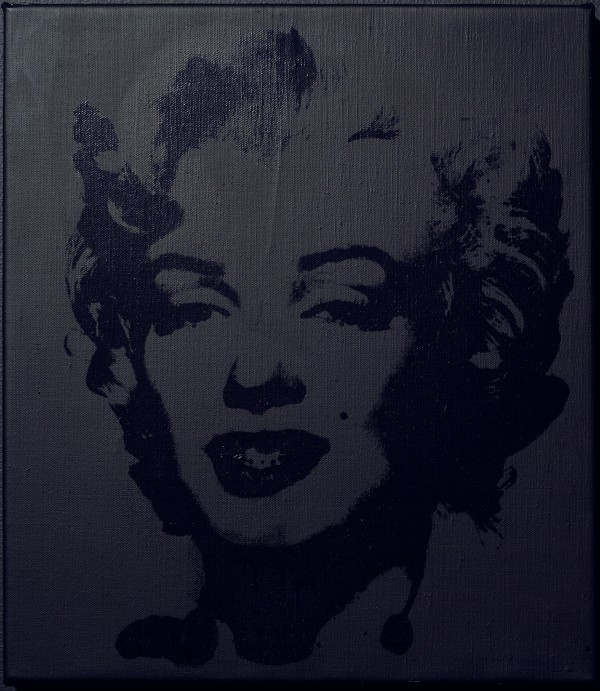
Sturtevant. Warhol Black Marilyn, 2004; synthetic polymer silkscreen and acrylic on canvas; 15 ¾ x 13 ¾ in. (40 x 35 cm). Ringier Collection. Courtesy Anthony Reynolds Gallery, London. © Sturtevant.
#access #discrimination #appropriation #institutions #representation #re-performance
Two important events transpired in the art world last week that have brought the complications of diversity and hierarchy into sharp focus. The first is the passing of artist Elaine Sturtevant, an artist who sublimated a critique of gendered inequity among artist peers into works that appropriated and re-created works deemed significant to the canon of contemporary art. The other is the withdrawal of the artist group Yams Collective from the Whitney Biennial following their unsuccessful resolution of objections to a racially problematic project by Joe Scanlan. These two stories illustrate the challenges that appropriation-based institutional critique continues to represent for art-world institutions that are resistant to change.
Rather than address gender inequity directly in her work, Sturtevant critiqued the negotiation between economics and art history that drives the valuation of art objects. Feminism was not her stated objective; in fact she disavowed gender’s relevance to her practice. Still, it is hardly a coincidence that the artists whose works she re-created were mostly white, heterosexual men, as these were the majority of works being shown and cited among her peers. She reenacted performances and re-created objects by Marcel Duchamp, Joseph Beuys, Andy Warhol, Jasper Johns, Felix Gonzalez-Torres, and Frank Stella, among others. By her acts of remaking, she thought through the processes and experiences of the artists who made these works before her, demystifying “genius” into a collection of styles and techniques; a catalog of contemporary practices that mirrored the distance and intellect of her own. Her work as an archivist and a re-producer prefigures important trends in contemporary art of the 1980s and 1990s by two decades.
Sturtevant was born in Ohio and came of age in New York, but the United States has been slow to embrace her. Exhibitions of her work were organized by the Serpentine Gallery in London, the Musée Moderne de la Ville de Paris, and the Moderna Museet in Stockholm over the past decade, yet the Sturtevant retrospective slated to open at MoMA in November 2014 will be the first museum show of her work in the U.S. since 1973. The wariness of American museums toward Sturtevant is surprising given their embrace of later appropriation artists such as the 1980s Pictures Generation, but less so considering the ongoing gender disparity among artists represented in museum collections. The market continues to prefer a canon defined by individual male superstars whom Sturtevant’s whole existence reflects as negation.

Micol Hebron. (en)Gendered (in)Equity: The Gallery Tally Project. Poster for Sara Meltzer Gallery (NYC) by Krista Feld, 2014.
Micol Hebron’s recent (en)Gendered (in)Equity: The Gallery Tally Poster Project at For Your Art in Los Angeles visualized the realities of gender imbalance in the art market on a grand scale. The galleries Hebron and her accomplices tallied in Los Angeles and New York represented nearly 70{b29860ee6b7af5bf99d3058cca3182816eed414b47dab251265e93b8c00e69b1} male artists overall. As Sturtevant’s work so deftly makes clear, that economic circumstance also determines whose work is deemed significant to history. As yet, no similar assessment has been made of ethnic diversity among artists represented in galleries or museums. This would seem a logical next step and one that I intend to help initiate down the line.
A 2010 report commissioned by the American Alliance of Museums indicated that the racial composition of contemporary museum audiences has remained at a level of diversity reminiscent of the 1970s while the diversity of the general population has more than tripled during that time. Worse still, comparative data shows that the percentage of people of color who are visitors to museums and art galleries has decreased as those populations have increased. For example, in 1992 the data shows that 17.5{b29860ee6b7af5bf99d3058cca3182816eed414b47dab251265e93b8c00e69b1} of Hispanics visited museums and galleries, but in 2008 it was only 14.5 percent. Meanwhile, the population of Hispanics in the U.S. multiplied from 9 percent to 30.2 percent. In approximate but digestible terms, while the population of Hispanics in the United States grew from 1:10 to 1:3, the population of Hispanics among art audiences dropped from 1:5 to 1:7. Similar, if less dramatic, trends are apparent among African Americans, the other minority group singled out in the NEA Survey of Public Participation in the Arts, cited in the AAM report. Given that art-gallery and museum attendance is shown to be dropping overall, the lack of traction with growing minority populations should be a significant cause for concern within the art world. Inexplicably, the Whitney Museum has instead opted to openly alienate minority audiences in this year’s Biennial.

Donelle Woolford. Avatar, 2007; digital file. Photograph by Donelle Woolford.
The subject of the current controversy is Joe Scanlan’s contribution to the Biennial, curated in by Michelle Grabner. Scanlan is a white man and Princeton professor whose work engages consumerism and persona in the parodic, conceptual vein mined by Sturtevant. His project for the Whitney Biennial involves creating the fictional persona of an Ivy League-educated black female artist, “Donelle Woolford,” and presenting performances and art objects conceptualized by Scanlan as the creative products of this fictional artist who is played by a variety of actors. One of “Woolford’s” works consists of re-performing a censored Richard Pryor stand-up routine from 1977 entitled “Dick’s Last Stand.” Work that manipulates artistic persona is not unprecedented. Beuys and Warhol self-mythologized, and many contemporary artists work under assumed or collective names, or even through simulacra. Adrian Piper’s work Mythic Being (1973) and the work of Sara Greenberger Rafferty, an artist whose critique of social roles in stand-up comedy Grabner also curated into the Biennial, appear to have directly influenced Scanlan’s choices.The problem with his project is that it functions by exploiting rather than critiquing the severely limited representation of minority artists at the Whitney, and in the art world more broadly. Scanlan’s own name does not appear in exhibitions that include “Donelle Woolford,” who is represented as if a real person. On the Whitney’s artist roster, the inclusion of “Woolford” brings the number of African American participants in the Biennial to 9 out of 103 (8{b29860ee6b7af5bf99d3058cca3182816eed414b47dab251265e93b8c00e69b1}), and the number of female participants to 38 (37{b29860ee6b7af5bf99d3058cca3182816eed414b47dab251265e93b8c00e69b1}) (statistics reported by Jillian Steinhauer at Hyperallergic).
The form of Scanlan’s project mimics the structures by which minority voices are circumscribed and appropriated by white-dominated institutions under increasingly multicultural social conditions. Their perspectives are edited and reconstructed according to the established priorities of the dominant political class, such that their presence is ultimately represented as justification of policies that actively exclude others like them. The actors who portray “Donelle Woolford” adopt dissimilar personae, potentially critiquing the interchangeability of minority faces in an exclusionary environment. However, by maintaining that exclusionary environment, the Whitney negates any credibility it might gain from enabling the critique. Scanlan’s presence as manipulator mirrors larger oppressive structures, but rather than open those structures to change, this project reinforces their inflexibility. There is simply no reason apart from institutional racism that the multiplicity of black female perspectives that inform Scanlan’s project could not be gained through an actual multiplicity of black female artists participating in the Biennial. The fact that the Whitney prefers to present Joe Scanlan speaks volumes.

The artist Joe Scanlan.
Calculated to stand out from the several dozen white male artists at the Biennial (and in every other high-profile show and job applicant pool), Scanlan uses “Woolford” to usurp the visibility accrued to minority artists in the contemporary art spotlight by the fact of their relative absence. For artists of color, that visibility is a small and hard-fought concession, a minor boost that does little to offset entrenched limitations on their access to art-world power structures. For Scanlan, the attention garnered by this project—and granted only because of the basic conditions of inequity within the exhibition and the art world—situates him to accrue benefits to his profile and market value commensurate with his position of privilege. He has parlayed this work into a professorship at Princeton (in a department where all of the tenured faculty appear to be white). He attempts to deflect the reality of that privilege by casting his fictional black-woman persona as a person of privilege herself, as if this negates the structural power imbalance that his work exploits. (It does not.) Meanwhile, his inclusion sends a clear message to minority artists and art viewers that while the Whitney is welcoming on its face, the perspectives of people of color are subject to mediation by the white academic establishment.

HOWDOYOUSAYYAMINAFRICAN? Good Stock on the Dimension Floor: An Opera, 2014; video, color, sound; 54 minutes. Collection of the Artists. © HOWDOYOUSAYYAMINAFRICAN?
Many artists and art supporters of color have already heard this message implicitly at countless exhibitions and art fairs. Yams Collective’s alias HOWDOYOUSAYYAMINAFRICAN? used for the Biennial speaks to how pervasive the generic view of blackness remains even in the new global art world, such that “Africa” is broadly and shallowly referenced as a historical and cultural framework, and only when compatible with a white-led agenda. Still, the inclusion of Scanlan’s project at the Whitney reads as blatantly exclusionary to many people of color. Already situated as a single entity charged with representing a vast diaspora in the absence of true parity, Yams Collective ultimately chose to withdraw their work from the exhibition after failing to receive what they felt was an adequately sensitive response from the museum staff or Grabner regarding their concerns. The collective explains that their withdrawal came at the tail end of the exhibition only after they abandoned a process of dialogue and reconciliation sought with the institution. It was met with a response from Joe Scanlan that underscores the tone-deaf nature of the whole undertaking, in which he justifies the “Donelle Woolford” project by extolling the educational value that producing the work has had for him personally: “I only want to say that the experiences I have had working on Donelle Woolford have been some of the most intellectually challenging and humanly rewarding experiences of my life.”
This self-centered perspective is at the heart of Scanlan’s decision to cast black women as agents for his personal edification and creative expression. It supercedes concern for those women’s lack of cultural space for self-determination, self-edification, or self-expression, or even whether the present undertaking further erodes that space. If Joe Scanlan wants to make art that looks at the world from someone else’s perspective, he would do better to work collectively and share the credit for his undertaking with peers who can help him to broaden it rather than engage superficially through contracted performers whose influence over the project’s trajectory is secondary to his own. This also requires that the Whitney value the contributions of a mixed-race group of artists as highly as they do those of a single white man. If the Biennial is to be redeemed from the obstinacy displayed by this debacle, it will only be by including a genuine diversity of artists and points of view in 2016. They could start by hiring some non-white curators next time around.
The 2014 Whitney Biennial was on view at the Whitney Museum of American Art in New York through May 25, 2014. Sturtevant’s retrospective will be on view at the Museum of Modern Art in New York from November 9, 2014–February 22, 2015.
#Hashtags is a series exploring the intersection of art, social issues, and global politics.
SOURCE: DAILY SERVING - Read entire story here.
Read More









